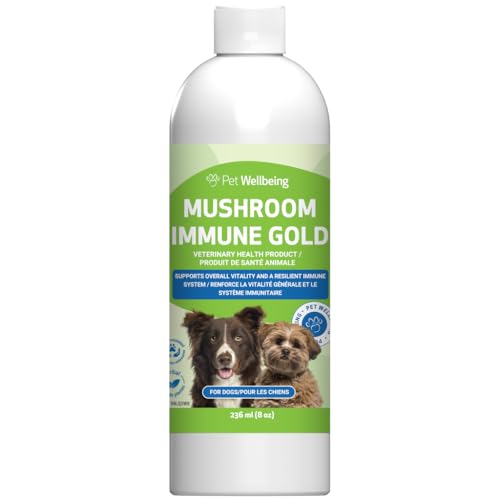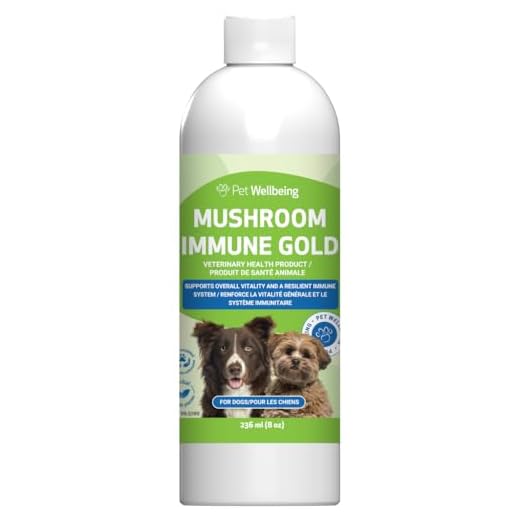




When a beloved pet is diagnosed with a growth in the pituitary gland, it’s natural to seek clarity about their remaining time. Typically, the prognosis for animals facing this challenge is variable, often ranging from several months to a few years, heavily influenced by the specific characteristics of the growth and the treatment approach taken.
Early detection plays a significant role. Recognising symptoms like changes in appetite, behaviour, or physical appearance can lead to timely veterinary intervention. The sooner a diagnosis is made, the more options there may be for treatment, including surgical removal or medication aimed at managing the condition.
It’s also critical to understand that each case is unique. Factors such as the pet’s age, overall health, and responsiveness to treatment contribute to their prognosis. Regular veterinary check-ups and monitoring of symptoms can provide valuable insights, allowing for adjustments in care that can enhance quality of life.
Supportive care, including a balanced diet and appropriate exercise, can also positively impact a pet’s well-being. Engaging in activities that bring joy and comfort can contribute significantly to their emotional health during this challenging time.
Survival Expectations for Canines with Endocrine Neoplasms
The prognosis for canines diagnosed with endocrine neoplasms varies significantly based on several factors including the size of the neoplasm, the presence of secondary health issues, and the treatment options pursued. On average, if treated appropriately, many canines can maintain a reasonable quality of life for one to three years post-diagnosis.
Factors Influencing Longevity
Several elements play a crucial role in determining how much time remains for a pet facing such a diagnosis:
| Factor | Impact on Prognosis |
|---|---|
| Size of Neoplasm | Larger neoplasms may lead to more significant complications, reducing survival time. |
| Response to Treatment | Pets that respond well to medical interventions often experience extended lifespans. |
| Age and Overall Health | Younger and healthier animals typically have better outcomes compared to older or unwell ones. |
| Regular Veterinary Care | Frequent check-ups can help manage symptoms and improve quality of life. |
Management Options
Managing the condition involves a combination of medication, dietary changes, and sometimes surgical intervention. Consulting a veterinary oncologist can provide tailored treatment plans that may extend life and enhance comfort. Regular monitoring and adjustments to the care plan are critical in addressing the evolving needs of the animal.
Understanding Pituitary Tumours in Dogs
Regular veterinary check-ups are crucial for early detection of any abnormalities, especially when it comes to hormonal imbalances. These growths within the pituitary gland can lead to various symptoms, including increased thirst, urination, and changes in appetite. Monitoring these signs can aid in timely intervention.
Diagnostics typically involve imaging techniques like MRI or CT scans, which provide a clear view of the gland’s condition. Blood tests can also help assess hormone levels and evaluate overall health. If a mass is confirmed, treatment options may include surgery, radiation therapy, or medication, depending on the tumour’s characteristics and the animal’s health status.
Nutrition plays a significant role in managing health during treatment. For pets with compromised digestive systems, feeding them the best food for dogs without gallbladder is essential. Such diets can alleviate digestive strain and promote better overall wellness.
Supportive care is equally important. Ensuring a stress-free environment can significantly improve the quality of life. Providing emotional comfort, maintaining a consistent routine, and monitoring for any changes are all effective strategies in supporting a canine companion facing health challenges.
Common Symptoms of Pituitary Tumours
Identify early signs to ensure timely intervention. Here are the most prevalent indicators:
- Increased thirst and urination: Frequent drinking and urination can signal hormonal imbalances.
- Changes in appetite: Noticeable weight gain or loss may occur due to altered metabolism.
- Behavioral shifts: Increased irritability, lethargy, or altered interactions with family members can indicate distress.
- Neurological signs: Seizures, disorientation, or difficulty walking are critical symptoms requiring immediate attention.
- Hair loss: Thinning fur or patches of baldness often arise from hormonal disruptions.
- Cushing’s disease symptoms: Pot-bellied appearance, muscle wasting, and skin issues may be present.
Observing Changes
Regularly monitor your pet’s behaviour and health. Any sudden changes warrant a visit to the vet. Keeping a journal of symptoms can be beneficial in discussions with your veterinarian.
Veterinary Consultation
Prompt veterinary assessment is essential for accurate diagnosis. Diagnostic tests, including blood work and imaging, help in understanding the situation better. Don’t hesitate to seek a second opinion if needed.
Diagnosis Process for Pituitary Tumours
Veterinarians often start by conducting a thorough physical examination, focusing on neurological signs that may indicate the presence of a growth in the brain. Observations related to behaviour changes, vision issues, or any signs of endocrine dysfunction can provide critical initial clues. Following this, blood tests may be performed to assess hormone levels and rule out other conditions.
Imaging Techniques
Advanced imaging techniques play a significant role in confirming the diagnosis. Magnetic Resonance Imaging (MRI) is the preferred method, offering detailed visuals of the brain and surrounding structures. This non-invasive approach allows specialists to determine the size and location of the mass accurately. In some cases, a Computed Tomography (CT) scan may also be utilised, particularly if MRI is not available.
Biopsy Considerations
If imaging results are inconclusive, a biopsy might be recommended. This involves obtaining a tissue sample for laboratory analysis, providing definitive information regarding the nature of the growth. However, due to the risks associated with this procedure, it’s typically reserved for cases where other diagnostic methods fail to provide clarity.
Treatment Options and Their Impact on Lifespan
Surgical intervention stands as a primary approach for addressing these growths. If successfully removed, some canines experience significant extensions in their lifespan, often enjoying months or even years of improved health. However, this option carries risks, including anaesthesia complications and post-operative recovery challenges.
Radiation therapy offers another avenue, particularly for those deemed inoperable. This method can reduce the size of the mass and alleviate pressure on surrounding structures. Many pets see an improvement in symptoms, which can lead to a better quality of life. Lifespan extension varies widely; some companions thrive for several years post-treatment, while others might only experience temporary relief.
Medications aimed at managing symptoms can also play a role. Corticosteroids, for instance, help control inflammation and can enhance comfort, but they do not treat the underlying issue. While some animals might enjoy a decent quality of life for a time, reliance on medications can sometimes shorten overall survival due to potential side effects.
Nutritional support and lifestyle modifications contribute significantly to well-being. A tailored diet can bolster immune function and energy levels, while regular gentle exercise helps maintain physical condition. These supportive measures, alongside medical treatments, can lead to a more fulfilling life, albeit with variable longevity outcomes.
Ongoing veterinary care remains crucial, as regular check-ups allow for timely adjustments to treatment plans. Engaging with a veterinary oncologist can provide insights into the most suitable options based on individual circumstances, ensuring that each pet receives the best possible care tailored to their unique needs.
Factors Influencing Survival Rates in Affected Dogs
Age plays a significant role in prognosis. Younger animals often exhibit a better response to treatment than older counterparts. This is likely due to their overall health and resilience.
The type and size of the growth directly impact the outcome. Larger masses, especially those that invade surrounding tissues, may lead to more severe complications, affecting longevity.
Clinical signs presented at diagnosis also matter. Early detection, characterised by milder symptoms, often correlates with improved survival rates. When symptoms are pronounced, it may indicate advanced disease.
Response to treatment varies among individual cases. Some pets may tolerate surgery or radiation well, while others might face complications that shorten their lifespan. Continuous monitoring post-treatment is essential to assess recovery and take necessary actions promptly.
Underlying health issues can complicate the situation. Conditions like diabetes or heart problems can hamper the ability to withstand treatments, leading to a decrease in survival duration.
Owner support plays a crucial role in the management of these conditions. A committed caregiver ensures adherence to treatment plans, regular vet visits and provides the emotional support that can influence the pet’s quality of life.
Regular veterinary check-ups also contribute to better outcomes. Routine examinations enable early detection of changes, allowing timely interventions and adjustments in treatment strategies.
Environmental factors, such as stress levels and overall living conditions, can affect recovery. A calm and stable environment promotes healing, while high-stress situations can negatively impact health.






